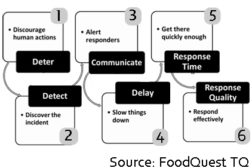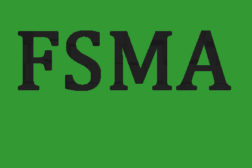Home » FSMA
Articles Tagged with ''FSMA''
FSMA and food import safety are priorities.
Read More
SQF Level 2 certification, FDA preventative controls compared
New report examines overlap, differences.
April 10, 2013
Plant Sanitation
Top five ways to get your plant sanitation FSMA-ready
Although the final FSMA preventive controls and cGMP provisions may be more than a year away, now is the time to develop and apply requisite science-based food safety plans.
April 9, 2013
Food Safety
Metal detection: Quality or safety?
Make sure the equipment has been properly set up and validated, and these activities have been fully documented.
April 9, 2013
TECH FLASH
Quantitative framework would improve food safety
A recent technical paper grades food safety performance from A to F.
April 8, 2013
Safe Quality Food announces information days program
The first seminar in the series will take place on April 18 in Chicago, IL.
April 1, 2013
TECH FLASH
Increasing complexity of the food chain demands improved management of supplier track and trace data
Tom Egan of PMMI discusses supplier track and trace with Food Engineering.
March 26, 2013
TECH FLASH
FDA releases International Food Safety Capacity-Building plan
The plan is designed to expand the food safety capacity of foreign governments and agencies.
March 12, 2013
Food Defense Systems
Staff vigilance: The first line of food defense
Facing mandates to safeguard against deliberate contamination, food companies walk a fine line between implementing effective defenses and creating an uncomfortable workplace.
March 6, 2013
FSMA Update
The devil’s in the details
Looking for some light reading material before going to bed? The first proposed rules for the Food Safety Modernization Act are not the place to start.
March 6, 2013
Elevate your expertise in food engineering with unparalleled insights and connections.
Get the latest industry updates tailored your way.
JOIN TODAY!Copyright ©2024. All Rights Reserved BNP Media.
Design, CMS, Hosting & Web Development :: ePublishing










